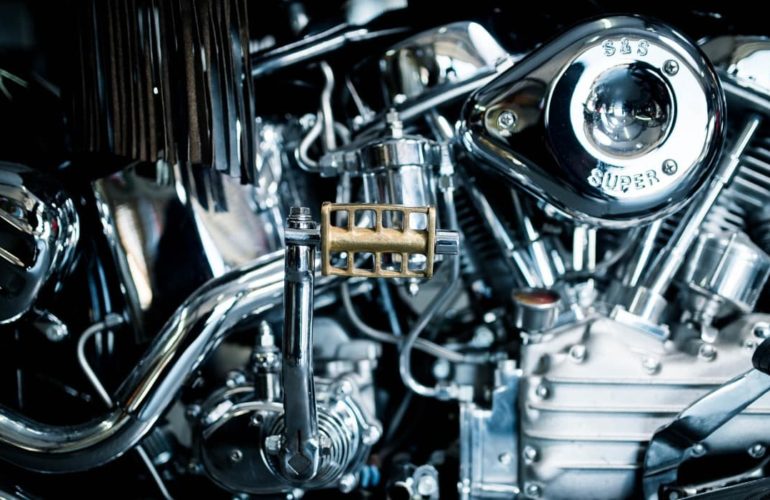“When Charlie found out the carburetor in his fifty-year-old Harley was dead,” …he should have known about 3D digitalization. Ok, now seriously.
3D digitalization
3D optical digitalization enables us to gain a complete set of information about a surface and evaluate dimensions and geometric tolerances, but it also allows us to perform reverse engineering; that is, to create areas and CAD data (Computer Aided Design) over the data from a surface scan. One of the applications of reverse engineering is reconstruction or even innovation of parts.

3D scanning
The first step of this entire process is 3D digitalization. To obtain 3D data, One3D uses a state-of-the-art ATOS 5 3D optical scanner with a rotary table. The 3D scanner is able to digitalize with up to 0.003 mm accuracy, which relies on the size of volume measured. Reference marks are affixed to the scanned part, which ensures proper stitching of individual scans. The scanning process is partially automated: the measuring system supports software control over the rotary table or industrial robot with a scanning head.

Adjustment of polygonal data
After the entire part is successfully scanned, the next step is to adjust the polygonal data. That involves non-destructive optimization, reduction of polygonal data, repairing holes, eliminating defective polygons, etc. The output of this step is data in STL format, a description of the surface using a mesh of triangles.

Reverse engineering
The second step involves the reconstruction of the polygonal data into the traditional CAD format, using areas or solids. We utilize advanced software tools, thanks to which we can create a legitimate CAD model with history, and even in native formats. During the process of creating the individual geometrical elements, we are also able to monitor shape-related deviances of the new geometry from the scanned model to keep the process under control. The output of this second step is a fully-fledged CAD model of the new part. For additive manufacturing or other conventional technologies, this is the final outcome. But it is no problem to create drawing documentation.

Manufacturing
The third step could then be additive manufacturing. The One3D group is equipped with a machine fleet for industrial 3D printing of polymers and metals. The part can be produced using selective laser melting (SLM or also DLMS) technology, which fuses grains of a metal powder with a laser beam. The material is locally melted according to the geometry of the part, layer by layer, constructing the full-volume metal part. In the case of a carburetor block, a suitable material could be, for example, the aluminum alloy AlSi10Mg.









